Hello movie fans!
2017 is finally coming to an end! Most of us are ready for the hope and change that comes with ringing in the new year, and some of is are afraid that 2018 will bring nothing but pain. This week’s movie is surprisingly deep, and takes into account the power that fear and believing have over people. Today I’ll be discussing Rise of the Guardians. I used to absolutely love this movie, and after watching it again, I can say that I’m once again a fan. So, let’s jump right into the review! (Also, there WILL be spoilers!)
The main protagonists of Rise of the Guardians are all ones we know and love- Santa Claus, the Easter Bunny, the Tooth Fairy, the Sandman, and of course, Jack Frost. However, each character is strikingly unique and nothing like what we grew up seeing. Santa, also called North, is a burly, tattooed, Russian man, who wields swords and works with yetis in his workshop. His sleigh is massive and engine-powered, and he uses portal-creating snow globes to get across continents and deliver his presents.  The Tooth Fairy’s design is reminiscent of a hummingbird, with bright feathers and fast-fluttering wings. Of course, she doesn’t work alone. She has thousands of smaller fairies that work with her to collect the teeth of children across the globe.
The Tooth Fairy’s design is reminiscent of a hummingbird, with bright feathers and fast-fluttering wings. Of course, she doesn’t work alone. She has thousands of smaller fairies that work with her to collect the teeth of children across the globe.  The Easter Bunny is huge, like the bunnies you would sit with at the mall. He’s also Australian, and wields two boomerangs as weapons. He travels by rabbit hole, hiding eggs during Easter celebrations for kids to run and find. It’s a creative twist on the Easter Bunny, but I’m not gonna lie, seeing the eggs run around on little legs getting painted was pretty unnerving.
The Easter Bunny is huge, like the bunnies you would sit with at the mall. He’s also Australian, and wields two boomerangs as weapons. He travels by rabbit hole, hiding eggs during Easter celebrations for kids to run and find. It’s a creative twist on the Easter Bunny, but I’m not gonna lie, seeing the eggs run around on little legs getting painted was pretty unnerving.  The Sandman brings dreams to the children of the world. He’s literally made of golden sand, which is gorgeous, but must have been a pain to animate. He’s also mute, and speaks by creating little pictures above his head. It makes sense that he’d be a silent character; of course, you wouldn’t want to wake sleeping children as you bring them their dreams!
The Sandman brings dreams to the children of the world. He’s literally made of golden sand, which is gorgeous, but must have been a pain to animate. He’s also mute, and speaks by creating little pictures above his head. It makes sense that he’d be a silent character; of course, you wouldn’t want to wake sleeping children as you bring them their dreams! Jack Frost is a mischievous young man who is responsible for bringing the cold snows of winter. His design isn’t as jaw-dropping as the other characters, but he has his own charm. One of his powers is that he can create frost at will, and when he first realized his magic, he had a lot of fun with it. The beautiful and delicate frost designs that Jack Frost creates must have been another pain to animate, but again, they were an utter success.
Jack Frost is a mischievous young man who is responsible for bringing the cold snows of winter. His design isn’t as jaw-dropping as the other characters, but he has his own charm. One of his powers is that he can create frost at will, and when he first realized his magic, he had a lot of fun with it. The beautiful and delicate frost designs that Jack Frost creates must have been another pain to animate, but again, they were an utter success. 
The story that Rise of the Guardians tells is one for all ages. Jack Frost is a young man turned immortal by the Man in the Moon, made for a purpose that Jack himself doesn’t know. He leads a lonely life, unseen by the children that don’t believe in him. One day, the Guardians of the world- Santa Claus, the Tooth Fairy, the Easter Bunny, and the Sandman- see a threat begin to arise. The Boogeyman, Pitch Black, wants to be believed in by the children of the world, and he wants to bring destruction to the Guardians. A new Guardian is selected to help them in their fight against Pitch, and that Guardian is Jack Frost. Together, the Guardians with their new team member must take down Pitch Black as he attempts to destroy them, forever. 
Pitch Black is the embodiment of fear. When children believe in the Boogeyman, they don’t just believe in him; they fear him. That fear is what Pitch uses to control his believers. By making them afraid of the outside world, he isolates them so they will struggle to believe anything but the fear he creates. It is this control, this manipulation of young kids that makes Pitch a villain. He also uses tactics to try to manipulate the Guardians into feeling pity for him. In one scene, Pitch has destroyed the Tooth Fairy’s palace, and begins monologuing to the Guardians. He talks about how, in a world where children are protected by the fairy tales they believe in, there isn’t a place for fear. Pitch wants to bring back fear, and regain the power that he once had. What he wants is to be believed in, and he shows this again is another scene, this time speaking to Jack alone. He tries to show Jack how they are alike, and how they could work together, and be believed in together. Jack is smarter though, and points out the difference between Pitch and the Guardians: children believe in the Guardians, but they fear Pitch. 
Along with fear, the idea of knowing yourself is important to the message of Rise of the Guardians. The idea is first introduced by North, when he explains how wonder is his “center”. Wonder is what inspires him to craft his toys, what he protects in the minds of children, and what makes him who he is- a Guardian. By the end of the film, Jack finds his center as well. His center is fun- by looking at his past memories, we see that Jack was always a fun-loving young man, and when he saved his younger sister, he did it by making a game. Fun is who Jack Frost is, and he demonstrates it throughout the film in the different mischievous actions. However, it can be argued that Jack Frost’s center could have been belief. For one, having Jack’s center be belief would have made a much stronger emotional impact that it just being fun. We know that Jack Frost is fun, and thus it is not very impactful when he finds that fun is the most important part of his character. Belief something much more personal to Jack. Here are a few examples of why:
All this time, no child has ever believed in Jack Frost. He was always just a fairy tale for children, and never anything else. Finally being believed and seen by Jamie was a huge thing for Jack, and a huge part of his character development. He becomes more sure of himself, more determined to protect the children like Jamie, and most importantly, after being believed in, Jack was able to accept his role as a Guardian.  The Guardian’s center is representative of what they protect in children. North protects the wonder of childish nature, the Easter Bunny protects the hope that lies in the heart of every kid, and so on. With his center being fun, Jack Frost protects the pieces of children that love to have fun. But when the Guardians are on their last leg, with only one kid who still believes, who protects the belief in the Guardians of that child?
The Guardian’s center is representative of what they protect in children. North protects the wonder of childish nature, the Easter Bunny protects the hope that lies in the heart of every kid, and so on. With his center being fun, Jack Frost protects the pieces of children that love to have fun. But when the Guardians are on their last leg, with only one kid who still believes, who protects the belief in the Guardians of that child? Jack Frost.
Jack Frost.
When he and his sister were caught on cracking ice, what did Jack tell his sister to convince her everything was going to be alright? “You have to believe in me.” Belief is just as much a part of who Jack is as fun is, and unlike fun, it’s not as obvious. It is a deep layer of who he is, like a center should be.
“You have to believe in me.” Belief is just as much a part of who Jack is as fun is, and unlike fun, it’s not as obvious. It is a deep layer of who he is, like a center should be.
The movie ends with Jack saying, “When the moon tells you something, believe it.” Throughout the movie, Jack had a difficult time believing that the Man in the Moon really wanted Jack to be a Guardian, when no child believed in him, and he could barely believe in himself. Jack’s ability to believe in himself, that he could be the Guardian that the Moon and the other Guardians expected him to be, it came from him finally being seen by the children. Jack Frost is an amazingly well-written character, with as much depth to who he is as any real human being.
Belief and fear go hand in hand, as shown by Rise of the Guardians. One message that is displayed by the film is that our fear of the things that frighten us is what gives those frightening things power. We can admit that there are scary things in the world, but we have a choice in whether or not they have power over us. Once the kids realize that they don’t have to be afraid of Pitch, he is no longer visible to them. This can be taken to mean that fear is just another form of belief, but one that is dangerous than the belief one can have in Santa or the Easter Bunny. Surprisingly, Rise of the Guardians has a second message that it enforces. In order for one to develop as a person, they have to understand and believe in themself. This is shown in Jack’s internal struggle of overcoming the doubt he creates in himself over whether he is truly a Guardian. By looking into his past memories, he was able to understand where he came from, and how he was meant to be a Guardian that protected the fun-loving spirits of the children of the world. Rise of the Guardians is an amazing film, with absolutely incredible character design and a deep plot that makes one really think about fear and belief. I’m happy to have closed out the year with this amazing movie. 
 The animation of Anastasia resembles much of what was popular at the time of its release. Despite being created by Fox Animation Studios, the movie strongly resembles that of Disney. It’s possible that this is due to the directors of Anastasia, Don Bluth and Gary Goldman, being ex-Disney animators. Either way, there are some distinct differences between the animation of Anastasia and that of Disney films. The characters in Anastasia are more realistic than those of Disney. Unlike Disney’s large, childlike eyes and mouths, the faces of Anastasia and her companions are less exaggerated and more realistic. There is also one scene in particular the strikes me as being completely unique. When Anastasia and her friends arrive in Paris,
The animation of Anastasia resembles much of what was popular at the time of its release. Despite being created by Fox Animation Studios, the movie strongly resembles that of Disney. It’s possible that this is due to the directors of Anastasia, Don Bluth and Gary Goldman, being ex-Disney animators. Either way, there are some distinct differences between the animation of Anastasia and that of Disney films. The characters in Anastasia are more realistic than those of Disney. Unlike Disney’s large, childlike eyes and mouths, the faces of Anastasia and her companions are less exaggerated and more realistic. There is also one scene in particular the strikes me as being completely unique. When Anastasia and her friends arrive in Paris,  Usually about now I’d talk about the music, but for the sake of fluidity, I have to describe the plot of Anastasia. The film is based off the true story of the House of Romanov, which you can learn about
Usually about now I’d talk about the music, but for the sake of fluidity, I have to describe the plot of Anastasia. The film is based off the true story of the House of Romanov, which you can learn about  Soon, riots erupt, clearly a reference to the Revolution of 1905 that was the beginning of the end for the Romanovs in real life. Angry common folk storm the palace and set it on fire, forcing the family to leave. Anastasia runs back into the burning palace to get her music box, and she is trailed by her terror-stricken grandmother. As everything is falling apart around them, a kitchen boy leads Anastasia and her grandmother out the back, but Anastasia drops her music box, which is then grabbed by the kitchen boy. The peril of the family doesn’t end there. As the Romanovs are leaving Russia by train, Anastasia is left behind, and she hits her head.
Soon, riots erupt, clearly a reference to the Revolution of 1905 that was the beginning of the end for the Romanovs in real life. Angry common folk storm the palace and set it on fire, forcing the family to leave. Anastasia runs back into the burning palace to get her music box, and she is trailed by her terror-stricken grandmother. As everything is falling apart around them, a kitchen boy leads Anastasia and her grandmother out the back, but Anastasia drops her music box, which is then grabbed by the kitchen boy. The peril of the family doesn’t end there. As the Romanovs are leaving Russia by train, Anastasia is left behind, and she hits her head. Either way, the men will get their cash and Anya will get a family. So, the three have their plan, which is nearly thwarted on multiple occasions by Rasputin, realizing that his mission to destroy the Romanovs is not finished. On their mission to Paris, Anya and Dimitri fall in love, and in my opinion, their romance was very well written. In the end, it is revealed that Anya remembers being helped out of the palace by the kitchen boy, and that the kitchen boy was actually Dimitri. Anya then proves that she is the long lost princess to her grandmother by showing the music box she found in Dimitri’s possession, and the key that she’s had in her possession since forever. Anya, now claiming her place as Anastasia, leaves her grandmother in Paris to honeymoon with Dimitri. Anastasia finally had the love she longed for all her life.
Either way, the men will get their cash and Anya will get a family. So, the three have their plan, which is nearly thwarted on multiple occasions by Rasputin, realizing that his mission to destroy the Romanovs is not finished. On their mission to Paris, Anya and Dimitri fall in love, and in my opinion, their romance was very well written. In the end, it is revealed that Anya remembers being helped out of the palace by the kitchen boy, and that the kitchen boy was actually Dimitri. Anya then proves that she is the long lost princess to her grandmother by showing the music box she found in Dimitri’s possession, and the key that she’s had in her possession since forever. Anya, now claiming her place as Anastasia, leaves her grandmother in Paris to honeymoon with Dimitri. Anastasia finally had the love she longed for all her life. As hinted at previously, Anastasia is a musical. The songs were surprisingly catchy, and I found myself humming along during several scenes. The main song of this movie is
As hinted at previously, Anastasia is a musical. The songs were surprisingly catchy, and I found myself humming along during several scenes. The main song of this movie is  The character development in Anastasia is nothing to be scoffed at, either. At the beginning of the movie, Anya is a lost, confused young woman. She feels as though she has no place where she belongs, no person that will love her. By the end of the film, she not only has a family and an answer to the question of her identity, but a lover as well. However, it is Dimitri’s development that sticks with me most. He begins the movie as a cocky, lying, but somehow still likable, young man. Through the course of the film, he falls in love with Anya, and realizes that he cares more about getting Anya’s love that the cash reward of returning her. Once he realizes Anya is really Anastasia, he knows that once she is with her grandmother he may never see her again. He also believes that she would never love a poor man such as himself, not realizing that she loves him back. Their love affair ends with Dimitri a changed man, proved by his rejection of the cash reward for returning Anastasia. Instead, what he wants is Anastasia’s love, and he gets it.
The character development in Anastasia is nothing to be scoffed at, either. At the beginning of the movie, Anya is a lost, confused young woman. She feels as though she has no place where she belongs, no person that will love her. By the end of the film, she not only has a family and an answer to the question of her identity, but a lover as well. However, it is Dimitri’s development that sticks with me most. He begins the movie as a cocky, lying, but somehow still likable, young man. Through the course of the film, he falls in love with Anya, and realizes that he cares more about getting Anya’s love that the cash reward of returning her. Once he realizes Anya is really Anastasia, he knows that once she is with her grandmother he may never see her again. He also believes that she would never love a poor man such as himself, not realizing that she loves him back. Their love affair ends with Dimitri a changed man, proved by his rejection of the cash reward for returning Anastasia. Instead, what he wants is Anastasia’s love, and he gets it.
 The animation and music of Balto unite harmoniously to create this film. The art is gorgeous in both character design and scenery. The music, too, is wonderfully orchestrated to add feelings of tension and relief, and joy and sadness that carry the story. One scene that demonstrates the unique harmony of music and animation is
The animation and music of Balto unite harmoniously to create this film. The art is gorgeous in both character design and scenery. The music, too, is wonderfully orchestrated to add feelings of tension and relief, and joy and sadness that carry the story. One scene that demonstrates the unique harmony of music and animation is  Jenna is also being pursued by Steele, the best sled dog in Nome who is very prideful and prejudiced against Balto. One day, Rosy falls ill with diphtheria, along with many other children. There is, however, no medicine in the city to treat the young ones.
Jenna is also being pursued by Steele, the best sled dog in Nome who is very prideful and prejudiced against Balto. One day, Rosy falls ill with diphtheria, along with many other children. There is, however, no medicine in the city to treat the young ones. Due to heavy storms, the medicine can’t be transported by sea or air, and by land the medicine can only be delivered to the city of Nenana, which is nearly 700 miles away from Nome. So, a sled dog team is assembled that will take the medicine from a train in Nenana back to Nome. Steele leads the team, but he mainly cares about how it will better his own image, and doesn’t care about the dying children he is helping. Soon after leaving Nenana with the medicine, Steele and his team get lost in a blizzard, and Steele is too prideful to listen to his team when they tell him to stop running them in circles. They end up falling down a steep icy slope, and the driver of the sled hurts himself. When word comes that the team is off their course, Balto goes out to help the team come home. He finds them by sniffing out Steele’s scent, and marks his trail so he can lead them back. However, when Balto does find them, Steele is still too proud and prejudiced against Balto to allow him to help. The tense fight that follows ends with Steele falling off a cliff, but not being injured, and Balto gaining the support of the team to lead them home. Steele does, however, get ahead of the sled team and recreates Balto’s path markings in different directions to get them lost. In the end, Balto follows his instincts and successfully brings the medicine to Nome, just in the nick of time.
Due to heavy storms, the medicine can’t be transported by sea or air, and by land the medicine can only be delivered to the city of Nenana, which is nearly 700 miles away from Nome. So, a sled dog team is assembled that will take the medicine from a train in Nenana back to Nome. Steele leads the team, but he mainly cares about how it will better his own image, and doesn’t care about the dying children he is helping. Soon after leaving Nenana with the medicine, Steele and his team get lost in a blizzard, and Steele is too prideful to listen to his team when they tell him to stop running them in circles. They end up falling down a steep icy slope, and the driver of the sled hurts himself. When word comes that the team is off their course, Balto goes out to help the team come home. He finds them by sniffing out Steele’s scent, and marks his trail so he can lead them back. However, when Balto does find them, Steele is still too proud and prejudiced against Balto to allow him to help. The tense fight that follows ends with Steele falling off a cliff, but not being injured, and Balto gaining the support of the team to lead them home. Steele does, however, get ahead of the sled team and recreates Balto’s path markings in different directions to get them lost. In the end, Balto follows his instincts and successfully brings the medicine to Nome, just in the nick of time. Balto is revered as a hero by everyone, and ends up winning Jenny’s heart. Steele, however, was spreading lies that the rest of the team had died in the blizzard due to Balto losing control of his wolf instincts, and he ends up losing all of his dog admirers due to his lies. In concluding the frame story, it is revealed that the elderly woman is in fact the young Rosy from the story.
Balto is revered as a hero by everyone, and ends up winning Jenny’s heart. Steele, however, was spreading lies that the rest of the team had died in the blizzard due to Balto losing control of his wolf instincts, and he ends up losing all of his dog admirers due to his lies. In concluding the frame story, it is revealed that the elderly woman is in fact the young Rosy from the story. The real Balto was a purebred Siberian husky, and led the dog sled team from the start of the journey. There were also multiple sled teams that relayed the medicine from Nenana to Nome, not a single team. Overall, it’s not hard to say that a majority of the film is fictionalized for the viewing pleasure of young children, but it still makes for an entertaining story. If you wish to learn more about the true story of Balto, there are several sites you can visit,
The real Balto was a purebred Siberian husky, and led the dog sled team from the start of the journey. There were also multiple sled teams that relayed the medicine from Nenana to Nome, not a single team. Overall, it’s not hard to say that a majority of the film is fictionalized for the viewing pleasure of young children, but it still makes for an entertaining story. If you wish to learn more about the true story of Balto, there are several sites you can visit, 





 Fantastic Mr. Fox is another example of a stop-motion animated film. This one, however, is different from the others, all because of the director. Wes Anderson is a well-renowned American director, and each of his movies has a very distinctive style unique to Anderson. It relies heavily on symmetrical shots and knolling in the compositions. Knolling is the arrangement of objects in parallel to each other or at 90-degree angles. Anderson’s style also uses a strong color pallet; in the case of Fantastic Mr. Fox, warm colors like orange, yellow, and brown create a fall mood that is perfect for this time of year. Overall, Wes Anderson’s style makes Fantastic Mr. Fox a beautifully arranged and aesthetically pleasing film.
Fantastic Mr. Fox is another example of a stop-motion animated film. This one, however, is different from the others, all because of the director. Wes Anderson is a well-renowned American director, and each of his movies has a very distinctive style unique to Anderson. It relies heavily on symmetrical shots and knolling in the compositions. Knolling is the arrangement of objects in parallel to each other or at 90-degree angles. Anderson’s style also uses a strong color pallet; in the case of Fantastic Mr. Fox, warm colors like orange, yellow, and brown create a fall mood that is perfect for this time of year. Overall, Wes Anderson’s style makes Fantastic Mr. Fox a beautifully arranged and aesthetically pleasing film. Wes Anderson’s style of direction also affects the movie’s soundtrack. 70’s and 80’s pop music is a staple in most of his films, and often the soundtrack revolves around a specific band. In Fantastic Mr. Fox, The Beach Boys make up a lot of the songs used. Instrumental background music also draws inspiration from vintage pop songs and is heavily dependent upon stringed instruments, especially guitar. This choice in music creates a very specific vintage aesthetic that is supported by the movie’s visual style and animation.
Wes Anderson’s style of direction also affects the movie’s soundtrack. 70’s and 80’s pop music is a staple in most of his films, and often the soundtrack revolves around a specific band. In Fantastic Mr. Fox, The Beach Boys make up a lot of the songs used. Instrumental background music also draws inspiration from vintage pop songs and is heavily dependent upon stringed instruments, especially guitar. This choice in music creates a very specific vintage aesthetic that is supported by the movie’s visual style and animation. Fantastic Mr. Fox is based on a book of the same name by children’s book author Roald Dahl. Both stories hold the same plot and entail similar details that make for a great story. It begins as such: Mr. Fox used to steal birds for a living, but now that he and his wife had a child, he has promised to move on to a safer career as a newspaper journalist. However, he still longs for that extra “je ne sais quoi” that came from being a robber. One day, Mr. Fox makes the decision to move his family from the underground burrow that they lived in to a tree, right by the properties of the farmers Boggis, Bunce, and Bean. After getting settled, Mr. Fox returns to his ways as a robber and steals from the three farmers: chickens from Boggis, ducks and geese from Bunce, and apple cider from Bean. Enraged, the farmers unite and decide to kill Mr. Fox. They first try to shoot him, but only manage to shoot off his tail. Then, they try to dig him out from under the tree he and his family inhabit. Forced to dig deeper underground, and with the farmers following him, Mr. Fox realizes how big of a mistake it was for him to have stolen from the farms. The rest of the animals are in danger because of him, and now that his nephew has been kidnapped by the farmers, it is up to Mr. Fox and his wild instincts to fix the mess he has put himself and others into.
Fantastic Mr. Fox is based on a book of the same name by children’s book author Roald Dahl. Both stories hold the same plot and entail similar details that make for a great story. It begins as such: Mr. Fox used to steal birds for a living, but now that he and his wife had a child, he has promised to move on to a safer career as a newspaper journalist. However, he still longs for that extra “je ne sais quoi” that came from being a robber. One day, Mr. Fox makes the decision to move his family from the underground burrow that they lived in to a tree, right by the properties of the farmers Boggis, Bunce, and Bean. After getting settled, Mr. Fox returns to his ways as a robber and steals from the three farmers: chickens from Boggis, ducks and geese from Bunce, and apple cider from Bean. Enraged, the farmers unite and decide to kill Mr. Fox. They first try to shoot him, but only manage to shoot off his tail. Then, they try to dig him out from under the tree he and his family inhabit. Forced to dig deeper underground, and with the farmers following him, Mr. Fox realizes how big of a mistake it was for him to have stolen from the farms. The rest of the animals are in danger because of him, and now that his nephew has been kidnapped by the farmers, it is up to Mr. Fox and his wild instincts to fix the mess he has put himself and others into.






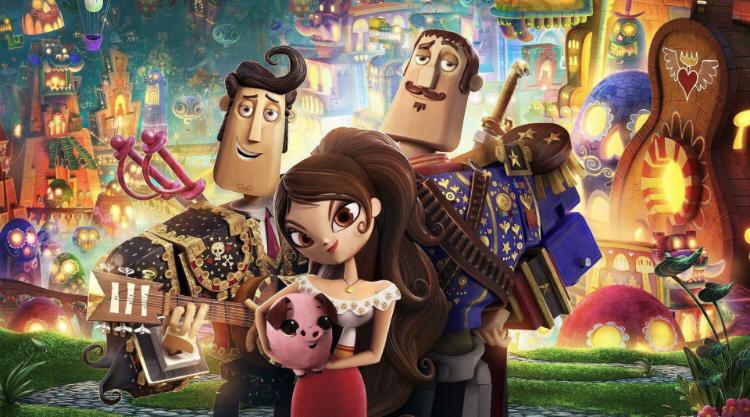
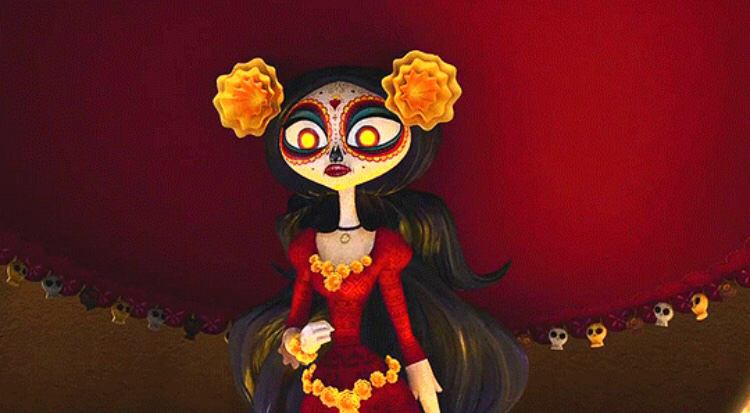
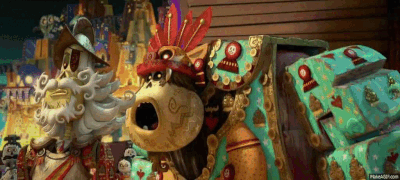
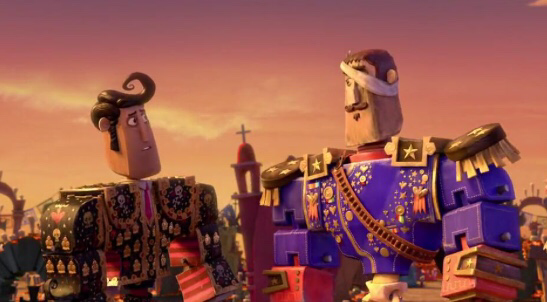


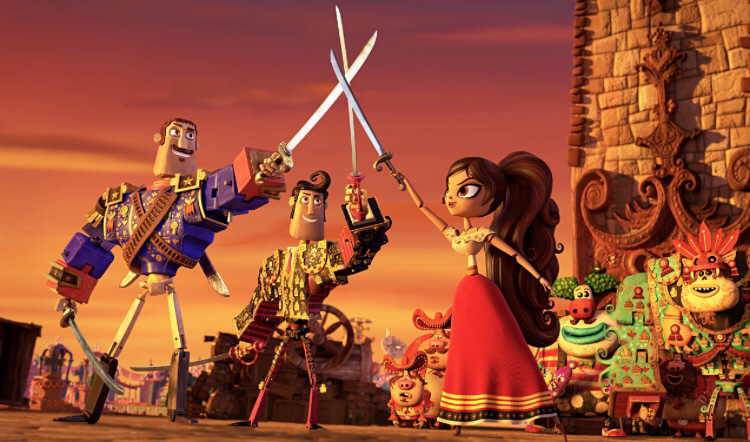
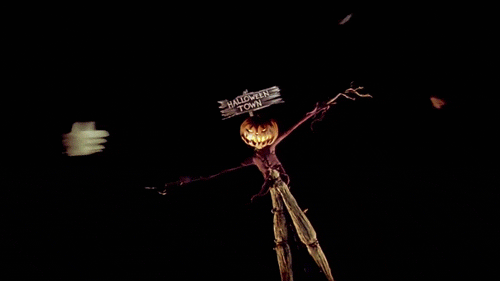
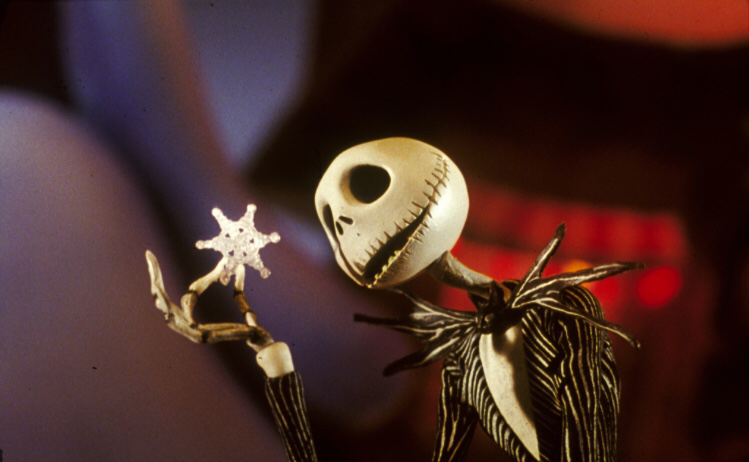

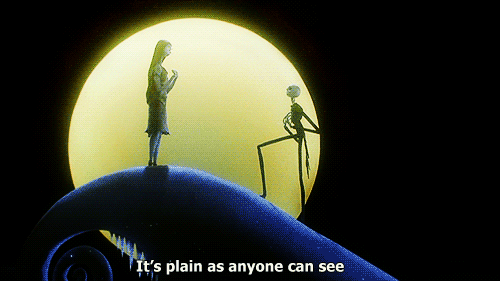










 the house across the street- the house that belongs to Mr. Nebbercracker. Every child that wanders onto his lawn is promptly yelled at, and every toy that lands on his property is confiscated. DJ wants to know why this is. He wants to know what has made Mr. Nebbercracker so bitter and mean, and explore the mystery behind his creepy old house that seems to come alive. This persistence against all odds and slight arrogance puts DJ in the Hero archetype, a common role for protagonists.
the house across the street- the house that belongs to Mr. Nebbercracker. Every child that wanders onto his lawn is promptly yelled at, and every toy that lands on his property is confiscated. DJ wants to know why this is. He wants to know what has made Mr. Nebbercracker so bitter and mean, and explore the mystery behind his creepy old house that seems to come alive. This persistence against all odds and slight arrogance puts DJ in the Hero archetype, a common role for protagonists. prepared to help DJ uncover the mystery of Mr. Nebbercracker’s living home, however he wants to do it his own was. He’s also somewhat sensitive and a bit of a scaredy-cat. It’s the childlike humor and originality that Chowder provides that places him in the Jester archetype.
prepared to help DJ uncover the mystery of Mr. Nebbercracker’s living home, however he wants to do it his own was. He’s also somewhat sensitive and a bit of a scaredy-cat. It’s the childlike humor and originality that Chowder provides that places him in the Jester archetype. candy at Nebbercracker’s house and learning of the house’s aliveness, she also wants to help uncover the mystery. She’s the voice of reason in the boy’s antics, however she’s not so straight-laced that she won’t go along with a creative and out-there idea. Her wisdom and rational thought process puts her in the Sage archetype, however the element of trickery and cleverness also makes her a Magician.
candy at Nebbercracker’s house and learning of the house’s aliveness, she also wants to help uncover the mystery. She’s the voice of reason in the boy’s antics, however she’s not so straight-laced that she won’t go along with a creative and out-there idea. Her wisdom and rational thought process puts her in the Sage archetype, however the element of trickery and cleverness also makes her a Magician.